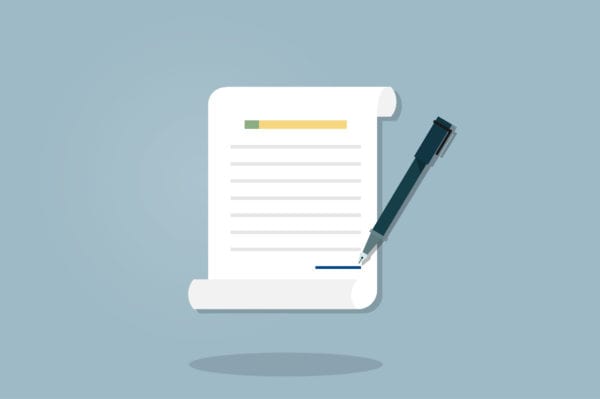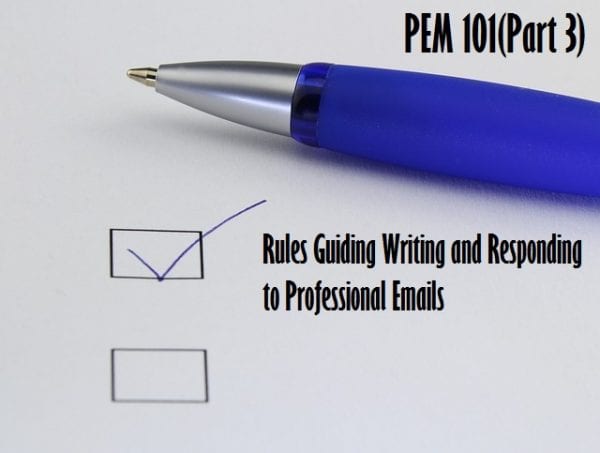The productive outcomes and intentions from a meeting will not translate into concrete business leads or sales for you or your organization with no follow up email! Your actions in the hours or days after a meeting are the most critical factors in whether or not you close the client/deal and outcomes from the meeting are implemented.
There are various methods for following up with clients and prospects after a meeting such as telephone calls, text messages, sending a product catalogue, and sending an email. The use of email is one of the most effective methods as it is easy and efficient.
Keypoints for Writing a Follow Up Email
- Thank the client for the meeting
- Capture the key issues discussed in the meeting
- State next steps with assigned responsibilities and timelines
- Make the most of the communication
Thank the Client for the Meeting
All follow up communication should begin by acknowledging the reason for the follow up. Use this opportunity to thank the client for the opportunity and time given to you. A follow-up email is an effective way to remind the client of your meeting and keep any impression you made at the meeting fresh in their mind. If you developed some rapport with the client during your meeting or bonded on a shared experience or interest, the follow up is a great place to play up this new relationship. A valuable way to do this is addressing the client by a nickname you just learned or they received at the meeting.
Capture the Key Issues Discussed in the Meeting
Emails sent after a client meeting should double as a high level meeting overview. The follow up email should itemize:
- Key points of the discussion
- Client suggestions or issues raised
- Conclusions/decisions
Capturing the client’s comments, opinions and requirements in your follow up email will reinforce to the client that you were listening attentively and taking their point of view seriously, so ensure you do not miss any key points. Take notes during meetings with clients and refer to your notes when writing follow up emails after each meeting.
Make use of tables, bullets or numbers to categorize information and make the email easy to read and understand.
State Next Steps with Assigned Responsibilities
Effective meetings have outcomes, it is essential to state these outcomes and their implications in the follow up email. Provide any information requested during the meeting if available and provide timelines for the completion of agreed tasks with clear details of the person expected to carry out the task.
Providing relevant information that was not expressly requested during the meeting takes your communication further and positions you as a competent and responsive professional. If a client made inquiries about other products and services offered by your company use this opportunity to share your product catalog and company profile.
Make the Most of the Communication
Use the follow up email to build on the impression created at the meeting. Think critically of the issues, concerns or opinion expressed by the client during your meeting and find creative and valuable ways to cater to such issues. This can be done by offering a guarantee on an item the customer indicated concern over or providing additional information on an issue the customer was unclear about.
Always stay abreast of the latest information and changes in your industry and that of your client. This knowledge will help you seem more competent and connect better with your client. Sharing industry knowledge is a simple but valuable way to create a relationship with your client.

Here is a sample follow up email using the tips discussed above to put these together and help you craft effective follow up emails after client meetings:
Dear Freda
Thank you for visiting our office yesterday, August 24, 2017. We appreciate your time and interest in our premium residential home construction services. We look forward to working with you to bring your dream home to reality.
Kindly find attached our catalogue of home designs and layout for your review. As discussed during the meetings:
Please provide your specifications for the building design such as number of rooms, number of bathrooms, common areas and balconies and other relevant information to aid the layout and design of your desired residence.
Our Head of Residential construction, Mr Samuel Amos, will send you proposed layouts for your planned residential home which you would like to double as a Bed & Breakfast hotel. You will receive the proposed layouts by Monday, September 4, 2017, for your review.
Amos and Miss Sarah Parker, our interior design consultant, will visit you within the coming week to discuss your thoughts on the proposed layouts and discuss interior options.
Please also find attached our relevant architecture and civil engineering licenses for your review. Be assured that all information and concepts shared with us remain confidential.
Thank you for choosing Manitoba Homes and Design. Please do not hesitate to contact us for any additional information.
Regards
Ann Smith
Manitoba Homes and Design
Conclusion
Post-meeting follow-ups are essential in maintaining momentum and achieving objectives set at a meeting. Make contact with clients within a few hours or the day after a meeting to refresh their memory of the meeting, reinforce strategic impressions of your business, product, or service, and prompt action toward the required outcomes.
Take accurate notes during meetings to ensure that when following up with clients after a meeting, you accurately capture their needs, requirements, and desires expressed during the meeting. Go the extra mile in your meeting and follow up by providing additional information to support your competence and fit to deliver on the client’s needs or offering reassurances, offers or incentives for action.
Check out more Email Templates and Samples to Follow Up After Meeting with a Client






